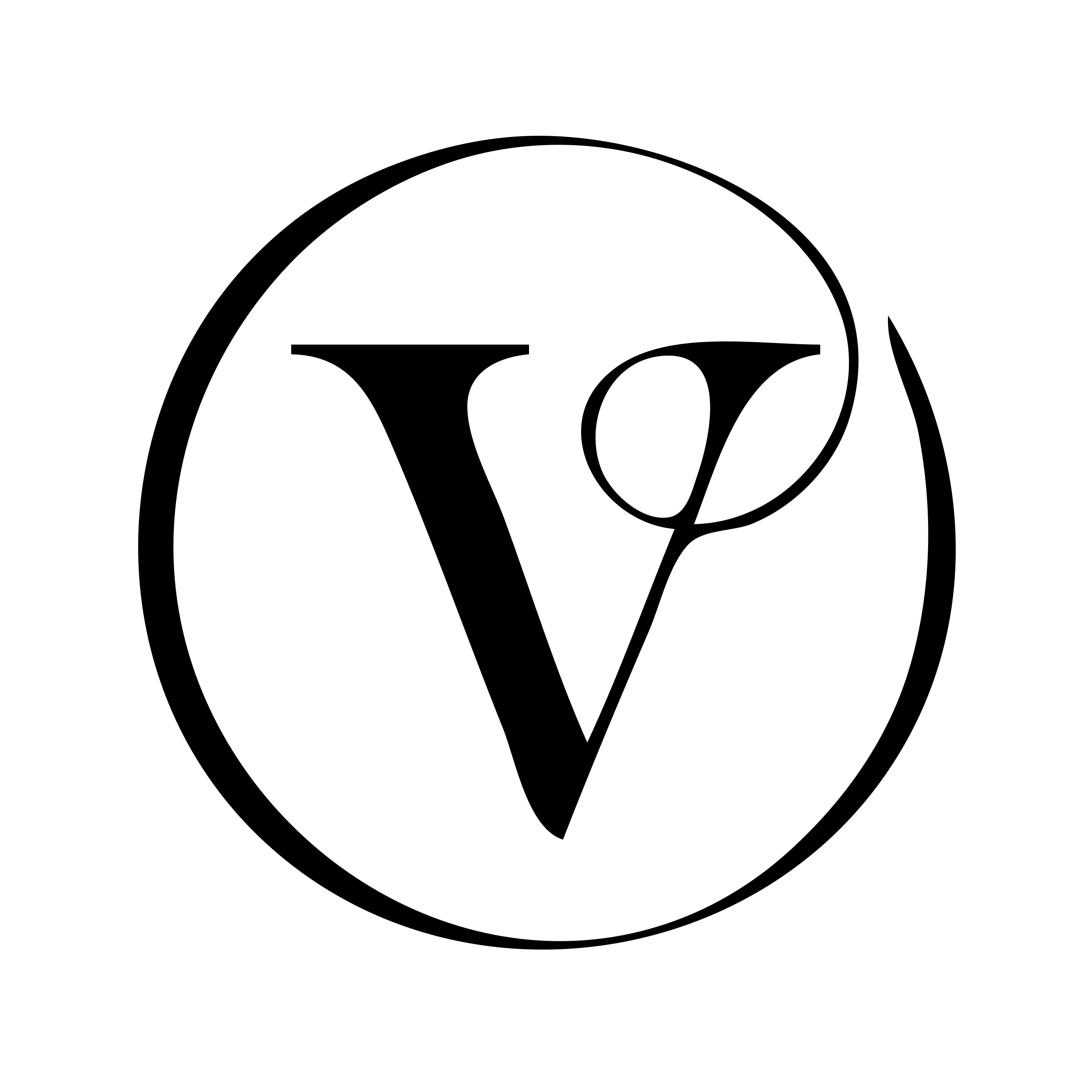Crafters..... Ahhh.... we’re always on the lookout for new materials, mediums & ideas to make new & different crafting products. In this blog post we will explore the medium of concrete, plasters & gypsums - what they are, what they are good for (from a makers perspective), pros & cons to each & where to find them.
Concrete?
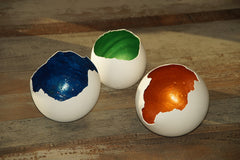
Concrete Crafters seem to have such a wide array of materials at their disposal to create stunning craft projects such as sculptures, Christmas decorations, all manner of home decor, candle jars, garden ornaments, sculptures, jewellery and so much more. Two popular alternatives to concrete are gypsum and plaster.
Let’s take a look at some of the different types of concrete, gypsum, and plaster, including Hydrostone, Cementall (especially its rapidset and quickrite fast variants), Hydrocal, Hydrocal 105, and Ultra Cal 30, and how crafters might choose the best material for their specific projects. We'll also highlight the benefits and drawbacks of each type and offer some suggestions where to source them in Australia, the UK, and the USA.
Concrete Types
1. Regular Concrete Mix:
Regular concrete mix is a versatile choice for crafting. It's readily available, cost-effective, and suitable for a wide range of projects like planters, stepping stones, and simple decorative items. You can easily find it in local hardware stores or home improvement centres.
Regular concrete," often referred to as "conventional concrete," is the most common type of concrete used in construction and various applications. It is typically made by mixing several key ingredients, primarily:
Portland Cement: The primary binding agent that holds the mixture together.
Aggregates: These include sand, gravel, or crushed stone, which provide strength, stability, and volume to the concrete.
Water: It acts as a medium for the chemical reaction that causes the concrete to harden.
Admixtures: These can include additives or chemicals that modify certain properties of the concrete, such as setting time or work-ability.
The Pros & Cons of Using Regular Concrete Mix in Craft Projects:
Pros:
- Affordable and readily available.
- Suitable for a variety of projects.
- Can be pigmented or textured.
Cons:
- May not be ideal for highly detailed projects.
- Longer curing time compared to specialized crafting concretes.
Where to Get Supplies:
You can purchase regular concrete mix and additional materials like pigments and moulds from local hardware stores, home improvement centres, or online retailers.
2. Hydrostone

Hydrostone is a specialized type of gypsum-based casting material known for its exceptional hardness, fine detail reproduction, and quick setting time. It is often used by artists, sculptors, and crafters for creating highly detailed and intricate casts or molds.
Here are some key characteristics of Hydrostone:
Hardness: Hydrostone is prized for its high hardness, which allows it to capture intricate details with precision. This quality makes it suitable for crafting projects that require fine features and sharp edges.
Setting Time: Hydrostone has a relatively fast setting time, meaning it hardens quickly after mixing with water. This can be advantageous for crafters who need to demold their creations sooner.
Low Shrinkage: Hydrostone is known for minimal shrinkage during the setting and drying process, ensuring that your final cast remains true to the original mold.
Versatility: Crafters and artists often use Hydrostone for a wide range of applications, from creating figurines and ornaments to detailed home decor items.
It's important to follow the manufacturer's instructions for mixing and handling, as precise ratios of water and Hydrostone are crucial to achieving the desired results in your crafting projects – add to many additives like acrylic paint, paint chips etc and your hydrostone won’t set (& leave you with one big mess to clean up and dispose of) don’t add enough water and you might find that you experience excessive air bubbles, this can be a similar problem if the water you use is really hard – look at using distilled water.
The Pros & Cons of Using Hydrostone in Craft Projects:
Pros:
- Exceptional hardness for fine details.
- Fast setting time.
- Low shrinkage.
- Suitable for small items such as candle jars & coasters
- Availability
Cons:
- Slightly more expensive than other options.
- Limited availability in some regions.
- Not ideal for complex or large projects
- Limited time for adjustments
Where to Get Supplies:
Hydrostone and related supplies can be found in local craft stores, online retailers, or specialty suppliers that cater to artisans and sculptors. In Australia we use barnes.com.au and would highly recommend.
Best for: Quick-turnaround projects where fast setting is essential.
3. CementAll: Rapidset & Quickrite Fast
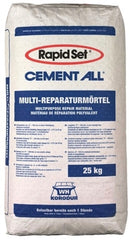
CementAll is a specialized high-performance cement-based product that is commonly used for various construction, repair, and crafting applications. It is known for its rapid-setting and high-strength properties.
Here are some key characteristics and uses of CementAll:
Rapid Setting: CementAll is designed to set quickly, often within 15 minutes of mixing with water. This fast-setting feature makes it particularly useful for projects that require a quick turnaround.
High Strength: It offers exceptional compressive strength, making it suitable for a wide range of applications that demand durability and load-bearing capacity.
Versatile: CementAll can be used for various purposes, including bonding, patching, resurfacing, and sculpting. It adheres well to a variety of surfaces, making it versatile for both construction and crafting.
Customizable: It can be pigmented and textured to achieve different decorative effects, making it a popular choice for decorative concrete projects.
Interior and Exterior Use: CementAll can be used both indoors and outdoors, making it suitable for a broad spectrum of applications, from structural repairs to artistic creations.
Availability: CementAll is available in various formulations, including rapid-set and quick-setting versions, offering flexibility in project timelines.
Pros of Using CementAll:
- Rapid Setting High Strength:
- Versatility
- Customization
- Interior and Exterior Use
- Durability
- Availability
Cons of Using CementAll:
- Quick Setting
- Price
- Dust and Safety
- Limited Availability
Where to Get Supplies:
You can purchase Cementall and related materials at most hardware stores, home improvement centers, and online retailers.
4. Gypsum based concrete
Hydrocal, Hydrocal 105, and Ultra Cal 30 are specialized gypsum-based products with different formulations and characteristics, often used in crafting, mold-making, and various industrial applications.
Let’s look a little deeper at each:
Hydrocal:
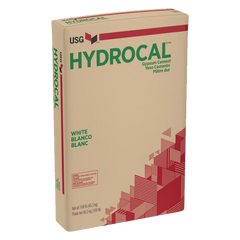
Hydrocal is a high-strength gypsum cement often used for creating molds, sculptures, and detailed castings. It is known for its strength, durability, and fine detail reproduction. Common applications include architectural models, figurines, and detailed ornamentation in crafting and industrial settings.
Mold-Making: Hydrocal is often used to create molds for casting various materials such as concrete, resin, and wax. Crafters can make intricate and durable molds to replicate objects, figurines, or decorative elements.
Sculpture: Many artists and crafters use Hydrocal to create sculptures and figurines due to its ability to capture fine details. It can be shaped and carved, making it suitable for creating three-dimensional art pieces.
Architectural Models: Hydrocal is a popular choice for crafting architectural models because it can produce precise and detailed representations of buildings, landscapes, and structures.
Home Decor: Crafters use Hydrocal to create decorative items such as relief sculptures, ornamental pieces, and wall hangings. Its strength and fine detail reproduction make it ideal for crafting home decor.
Miniatures: Hydrocal is often used in crafting miniatures for various hobbies, including dollhouses, dioramas, and model railways, due to its ability to create tiny, detailed elements.
Casting: Hydrocal can be used to cast decorative elements and ornamental features for furniture, frames, and other crafting projects.
Art Restoration: Some artisans use Hydrocal for repairing and restoring damaged or missing decorative elements in antique or vintage pieces.
Faux Finishes: Hydrocal can be used in faux finishing techniques to replicate the appearance of stone, stucco, or other textured surfaces on walls and decor items.
Hydrocal is prized for its ability to capture fine details and its durability, making it an excellent choice for crafting projects that require precision and longevity. Crafters often use it in combination with molds and sculpting techniques to create a wide range of decorative and artistic items.
Hydrocal 105:
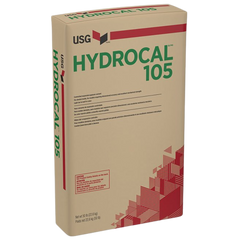
Hydrocal 105 is a specialized gypsum-based product that shares some characteristics with standard Hydrocal but offers increased strength and resistance to wear. In crafting, Hydrocal 105 can be particularly useful for various projects due to its durability and fine detail reproduction where toughness is crucial. Here are some common crafting applications where Hydrocal 105 can be advantageous:
Sculptures: Hydrocal 105's high strength and fine detail reproduction make it an excellent choice for crafting sculptures, figurines, and three-dimensional art pieces. Crafters can create intricate and robust sculptures with this material.
Architectural Models: When crafting architectural models, especially those that require small, detailed components, Hydrocal 105 can provide the strength and precision needed to replicate buildings, landscapes, and structures accurately.
Ornaments and Decorative Pieces: Crafters can use Hydrocal 105 to craft ornamental and decorative items, such as relief sculptures, wall hangings, and intricate decorative elements for home decor projects.
Miniatures: For hobbyists and model enthusiasts, Hydrocal 105 is suitable for crafting miniatures, including those for dollhouses, dioramas, model railways, and tabletop gaming.
Furniture Detailing: Hydrocal 105 can be used to create detailed ornamental features for furniture, picture frames, and other crafting projects, enhancing their aesthetic appeal.
Art Restoration: Some artisans use Hydrocal 105 for restoring damaged or missing decorative elements on antique or vintage pieces, contributing to their preservation.
Casting: Crafters can employ Hydrocal 105 for casting detailed elements and features that require both strength and precision in the reproduction process.
Special Effects: In crafting special effects for films, theater, or cosplay, Hydrocal 105 can be used to create prosthetic pieces and detailed props.
Hydrocal 105's combination of strength, fine detail reproduction, and resistance to wear makes it an excellent choice for crafting projects that demand both durability and precision. When working with this material, it's important to follow the manufacturer's guidelines for mixing and handling to achieve the best results in your crafting endeavors.
Ultra Cal 30:
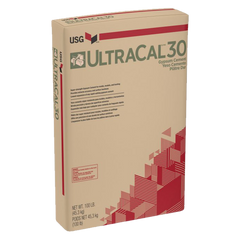
Ultra Cal 30 is a high-strength gypsum cement known for its excellent hardness and exceptional casting performance. It is often used for casting large, robust items and for applications where high hardness is necessary, such as architectural details, special effects, and industrial molding. Ultra Cal 30 is also recognized for minimal expansion, which helps preserve the integrity of the original mold. These gypsum-based materials are prized for their precision, fine detail reproduction, and versatility in creating molds and castings. Crafters, artists, and industrial professionals often choose them based on project requirements, such as the level of detail needed, the scale of the item, and the desired durability.
When working with these materials, it's essential to follow the manufacturer's instructions for mixing, curing, and handling to achieve the best results.
Where to Get Supplies:
When working with these materials, it's essential to follow the manufacturer's instructions for mixing, curing, and handling to achieve the best results.
The Pros & Cons of Using Gypsum-based concretes in Craft Projects:
Hydrocal:
Best for: Creating detailed, durable, and heat-resistant molds.
Pros:
- Superior strength and absorption qualities.
- Ideal for mold-making and casting.
- Good for intricate decor items.
Cons:
- Longer setting time compared to rapid-set options.
- May require special handling.
Where to Get Supplies:
Hydrocal and its related products can be found in art supply stores, online craft retailers, and some industrial supply companies.
Hydrocal 105:
Best for: Projects that need strength and durability.
Pros:
- High compressive strength and resistance to wear.
- Great for detailed models, figurines, and ornaments.
Cons:
- Slower setting time.
- Limited availability in some regions.
Where to Get Supplies:
Hydrocal 105 can be obtained from local art supply stores, industrial supply companies, and online retailers.
Ultra Cal 30:
Best for: Large and sturdy decorative items, including architectural models.
Pros:
- Excellent for projects requiring high hardness.
- Easy to work with.
Cons:
- Longer setting time.
- Slightly more expensive compared to regular gypsum options.
Where to Get Supplies:
Ultra Cal 30 and related materials can be purchased from industrial supply companies, online craft retailers, and some specialized art supply stores. I am based in Australia & get mine from barnes.com.au & would highly recommend them.
5. Lightweight Concretes
Lightweight concrete is a specialized type of concrete that is formulated to be significantly lighter than traditional concrete. It achieves this by incorporating lightweight aggregates such as expanded clay, shale, or pumice, which reduce its density while maintaining strength.
In crafting home decor products, lightweight concrete can be used to create a variety of items like planters, decorative sculptures, and other ornamental pieces. Its lower density makes it easier to work with and suitable for crafting projects that require a more delicate touch, especially when fine details or intricate designs are involved.
Due to its lighter weight, it's also an ideal choice for crafting items like lightweight concrete planters that need to be easy to move and handle. Lightweight concrete can be customized with pigments, textures, and molds to match your design preferences, making it a versatile option for creative home decor projects.
One popular brand of lightweight concrete used for crafting projects is "Hypertufa." Hypertufa is a lightweight, porous concrete mixture that's often used to create decorative planters, garden ornaments, and various outdoor and indoor crafting items. It's known for its ease of use and adaptability for creative DIY projects. You can find Hypertufa mix or Hypertufa kits in many gardening stores, craft supply shops, or online retailers, making it a readily available option for crafters looking to work with lightweight concrete.
Pros:
- Easier to work with for intricate designs.
- Suitable for garden decor and lightweight projects.
- Available in various mixes.
Cons:
- Not as strong as regular concrete.
- May require additional reinforcement for structural projects.
Where to Get Supplies:
Lightweight concrete mixes are available at many hardware stores, home improvement centres, and online retailers.
Australia:
In Australia, you can find lightweight concrete products from brands like "Hebel" and "CSR Lightweight Concrete."
USA:
In the United States, you can explore lightweight concrete options from brands such as "Aerix Industries," "Litebuilt," and "Cell-Crete Corporation."
UK:
In the United Kingdom, "Toplite" and "Celcon" are well-known brands offering lightweight concrete solutions.
6. Decorative Concrete overlays
Decorative concrete overlays provide a fantastic way to give existing surfaces, such as countertops, a fresh and stylish look. They can be customized with colors, patterns, and textures to suit your design preferences. Decorative concrete overlays are specialized coatings that can be applied to existing concrete surfaces, enhancing their appearance and texture. They are used to transform plain or damaged concrete into aesthetically pleasing and functional surfaces. These overlays can be customized with various colors, patterns, and textures, making them an excellent choice for crafting and decorative projects.
Pros:
- Ideal for surface resurfacing.
- Customizable with a wide range of decorative options.
- Perfect for home decor projects.
- Aesthetic versatility
- Surface enhancement
- Durability
- Customization
Cons:
- Not suitable for casting three-dimensional objects.
- Requires surface preparation and proper sealing.
- Skill requirement
- Cost
Where to Get Supplies:
Australia:
You can find decorative concrete overlays and related products in Australia at specialized concrete supply stores, building supply centres, and some larger home improvement stores. Local concrete contractors or artisans may also provide access to these materials.
USA:
In the United States, decorative concrete overlays are readily available from concrete supply stores, home improvement centres, and specialty retailers that cater to DIY enthusiasts and professional contractors.
UK:
In the United Kingdom, you can source decorative concrete overlays from building supply stores, specialized decorative concrete suppliers, and some online retailers that cater to the construction and crafting markets.
7. No. 1 Pottery Plaster
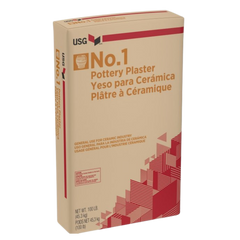
No.1 Pottery Plaster, often referred to as Pottery Plaster #1, is a type of gypsum-based plaster specifically designed for use in pottery and ceramics. It's formulated to have certain characteristics that make it suitable for crafting and casting ceramic pieces.
Let’s look a little closer at No.1 Pottery Plaster:
Uses:
Ceramic Molds:
Pottery plaster #1 is commonly used to create moulds for slip casting, a technique used in ceramics to create multiple copies of the same ceramic piece.
Ceramic Sculptures:
It can also be used in the crafting of ceramic sculptures and other ceramic art forms.
Pottery Repair:
Some potters and artisans use it for repairing cracks or chips in pottery pieces.
Pros of Using Pottery Plaster #1:
Absorption Rate: Pottery plaster #1 has a high absorption rate, which is ideal for slip casting. It absorbs water from the clay slip quickly, allowing for precise and detailed casting.
Smooth Finish: It results in a smooth and fine surface texture, which is perfect for ceramics that require a clean and detailed finish.
Minimal Expansion: This plaster typically has minimal expansion during the setting process, which helps maintain the accuracy of the mold.
Cons of Using Pottery Plaster #1:
Brittleness: Pottery plaster #1 is relatively brittle compared to other gypsum materials, which means it may not be suitable for applications requiring durability or heavy use.
Setting Time: It can have a longer setting time compared to some other gypsum plasters, which may require more patience during the crafting process.
Where to Get Supplies:
Australia:
In Australia, you can find Pottery Plaster #1 at pottery supply stores, art supply shops, or industrial supply companies.
USA:
In the United States, it is available in pottery supply stores, art supply shops, and online retailers that cater to potters and ceramic artists.
UK:
In the United Kingdom, pottery plaster #1 can be sourced from pottery supply stores, art supply shops, and some online retailers specializing in ceramics and pottery materials.
Last thoughts
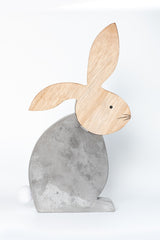
When it comes to crafting with concrete, choosing the right type is crucial to achieving the desired results. Hydrostone is an excellent option for intricate and detailed projects, while regular concrete mix is a versatile, cost-effective choice for various crafting endeavors.
Rapid set concrete is perfect for projects that demand a quick turnaround, and lightweight concrete is best suited for lightweight or garden-related items. Decorative concrete overlays are great for surface resurfacing and home decor projects. No matter where you are located, you can find the necessary supplies in local stores or through online retailers. So, get creative and start crafting with concrete to create unique and long-lasting pieces for your home or special occasions!
